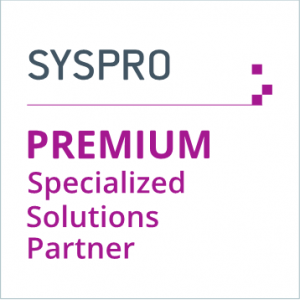In the past few years supply chain inconsistencies have become the major issue food and beverage manufacturers and distributors struggle with. The COVID pandemic, changing consumer behaviors and the struggle to find good employees up and down the supply chain have caused more problems than ever before.
But despite all the struggles, there are those companies that are finding success in managing supply chains and meeting both consumer, customer and supplier demands. How are they doing it? By embracing S&OP.
S&OP Explained and Why it Matters
S&OP is short for Sales and Operations Planning. Most food and beverage companies run on an Annual Operations Plan (AOP). If that sounds like your company you should know that your plan is most likely already out of date and you’re behind.
If you’re business depends solely on an Annual Operations Plan (AOP) your data is most likely already out of date and you’re behind.
As the pace of business and changes in the market accelerate, well run enterprises today are moving away from annual plans to monthly S&OP sessions with dedicated, cross-functional teams with executive sponsorship, meeting to create and modify short-term planning based on shorter timeframes, changing demands and differing constraints. The overall goal is to get the right products to the right place at the right time and at the lowest cost.
The S&OP Team
Good S&OP teams include sales, production, demand planning and financial executives. Team members look across the entire enterprise to provide insight into what the short-term needs of the business will be and whether KPI’s are being met.
The data includes sales forecasts and expected increases or decreases, the needs of production, including personnel, scheduled downtime and maintenance requirements and whether demand is spread out or expected to come in large orders and what the financial impacts will be on operating costs.
Ideally, these teams are also communicating up and down the supply chain with both vendors and customers to better understand their requirements. The information is then put together as a short-term plan for company executive management review and approval.
From S&OP to S&OE

Sales and Operations Planning is a waste of time if it’s created with no action behind it. For S&OP to be effective it needs to be acted upon and that’s where Sales and Operations Execution (S&OE) comes into the picture.
The S&OP team needs to not only understand short-term needs, it needs to have a clear plan of execution behind it to ensure company goals are met.
S&OP Best Practices
To fully utilize S&OP food and beverage manufacturers and distributors will need to adopt best practices. In some cases this could mean a change in company culture.
In many businesses departments run in silos. Sales passes along orders, production plans and executes while finance collects against invoices and pays the bills.
But for S&OP to work, it is imperative that different departments collaborate together and the S&OP team hold each other accountable. Sales will need to provide insight into not only orders in the pipeline but also communicate and provide feedback on expected wins and possible losses.
Production and demand planning will need to coordinate and communicate about different issues that could affect the creation of goods in areas such as inventory, shipping and personnel requirements and where potential bottlenecks might develop. Finance will need to be prepared to make sure capital is available and bills are paid. In short, it will take a complete team effort.
Of course for a truly effective S&OP to come together, It will have to have strong executive buy-in and support. No plan will work without executive oversight and empowerment.
Using Technology to Support S&OP
The backbone of any strong S&OP comes from technology. To be truly effective S&OP requires clean and accurate data from across the enterprise.
While it is not necessary to have a unified ERP system to create a sales and operations plan, the use of data and insights a business system provides can make the task infinitely easier.
A reliable ERP system not only provides sales data it can also generate probability forecasts. Accurate system inventory makes production and demand planning much more accurate. Vendor performance can be graded and multiple suppliers can be set-up and ready to engage with.
An ERP system should also provide “one version of the truth” so everybody can operate off the same set of assumptions and numbers.
While many companies use sophisticated spreadsheets to model information and measure against KPI’s for S&OP, once data is moved to a spreadsheet it can rapidly turn stale and inaccurate.
S&OP to Better Manage Supply Chains
The more accurate a company can plan and forecast, the better it becomes in managing its supply chain. Accurate S&OP can provide more accurate information to suppliers, allow for better communication with customers and improves margins and price stability inside the company.
In today’s business environment S&OP isn’t a “nice to have” for food and beverage companies it’s a requirement.
Key Takeaways
- S&OP is rapidly becoming a key requirement for successful supply chain management
- Cross-functional S&OP teams meet regularly to map short-term business requirements
- S&OP teams must be empowered to not only plan but help execute against it
- Executive sponsorship is vital to successful S&OP
- Leverage technology for better understanding and planning
Technologies International, Inc. works with food and beverage companies to support growth and protect against eroding margins. We help solve business issues that prevent companies from reaching their goals. Let’s talk about how we can help you solve critical issues. Call us today at (909)-614-1416 ext. 120 or visit our website at https://tech-intl.com


